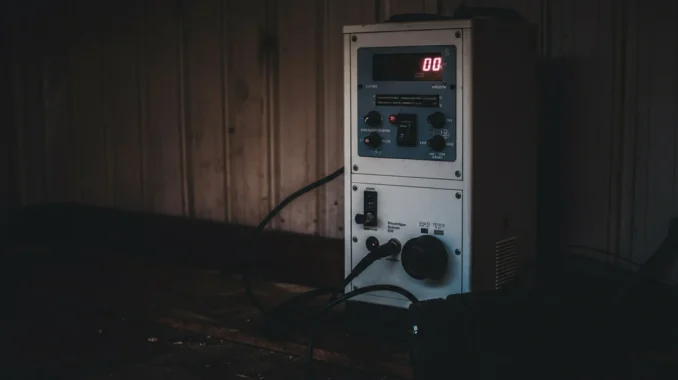In times of war, conflict, or severe disruptions, food shortages can become a real danger. Supermarkets may close, supply chains may break, and access to fresh food can be difficult or impossible. Having a stockpile of long-lasting, nutritious foods can keep you and your family safe, fed, and healthy when access to supplies is limited.
This guide will help you understand which foods to store, how to store them properly, and what mistakes to avoid so you can be prepared for any crisis in Europe.

Step 1: What Makes a Good Emergency Food?
Not all food is suitable for long-term storage. The best emergency foods should be:
- Non-perishable – Can last for months or years without refrigeration.
- Nutrient-dense – Provides essential vitamins, protein, and energy.
- Easy to prepare – Requires little to no cooking or additional ingredients.
- Compact and lightweight – Can be stored efficiently and, if necessary, carried during an evacuation.
What NOT to Store:
- Fresh dairy and meat – Spoils quickly without refrigeration.
- High-moisture foods – Mold and bacteria grow faster in wet foods.
- Foods that require a lot of water or electricity to cook – If utilities are down, preparing them may be difficult.
Step 2: Best Long-Lasting Foods to Store
Here are the best foods to keep for emergency situations, sorted by category.
1. Dry Grains and Carbohydrates (Staple Energy Sources)
These foods provide long-lasting energy and are easy to store.
- Rice (white rice lasts longer than brown rice, up to 30 years in proper storage).
- Pasta (durable and easy to cook, lasts 2–5 years).
- Oats (lasts up to 10 years when sealed properly).
- Flour (white flour lasts about a year, whole wheat shorter due to oils).
- Cornmeal (great for making bread or porridge, lasts 1–2 years).
- Dried lentils and beans (lasts over 10 years, high in protein and fiber).
- Quinoa (long shelf life, high protein content, gluten-free).
2. Protein Sources (For Strength and Immunity)
Protein is essential for keeping your muscles strong and your immune system working.
- Canned meat (tuna, chicken, ham, beef, lasts 3–5 years).
- Dried or freeze-dried meat (lasts over 10 years if stored properly).
- Peanut butter (high in calories and protein, lasts 1–2 years).
- Canned fish (sardines, salmon, mackerel) (great for omega-3s, lasts up to 5 years).
- Powdered eggs (great for baking and protein, lasts up to 10 years).
- Protein bars (compact and ready to eat, last around a year).
- Nuts and seeds (store in airtight containers to prevent spoilage, lasts 1–2 years).
3. Dairy & Alternatives (For Calcium and Nutrients)
Dairy doesn’t last long without refrigeration, but these alternatives do:
- Powdered milk (essential for calcium, lasts up to 20 years).
- Canned evaporated milk (lasts over a year, good for cooking).
- Shelf-stable cheese (waxed cheese blocks can last for years if stored properly).
4. Fruits & Vegetables (For Vitamins and Fiber)
While fresh produce won’t last long, these alternatives provide essential nutrients.
- Canned vegetables (corn, peas, carrots, beans, lasts 3–5 years).
- Canned fruits (peaches, pears, pineapples, high in vitamin C, lasts 1–2 years).
- Dried fruits (raisins, apricots, dates, last 1–2 years if sealed well).
- Freeze-dried vegetables (retain nutrients, last up to 10 years).
5. Fats and Oils (For Energy and Cooking)
Fat is a crucial energy source and helps with nutrient absorption.
- Cooking oils (olive, coconut, vegetable oil) (lasts 1–2 years, store in a cool, dark place).
- Canned butter or ghee (lasts over a year, does not require refrigeration).
- Nut butters (high in healthy fats and calories, store well for 1–2 years).
6. Emergency-Ready Meals (Minimal Preparation Needed)
Some foods require little to no preparation, ideal for emergency situations.
- Ready-to-eat meals (MREs) (used by militaries, shelf life of up to 5 years).
- Canned soups and stews (protein and nutrient-rich, last 3–5 years).
- Instant noodles or cup noodles (not the healthiest, but easy to prepare, lasts 1–2 years).
- Freeze-dried meals (lightweight, long shelf life of 10+ years, just add water).
7. Water & Beverages (For Hydration and Health)
Without clean water, survival is impossible. Store:
- Bottled water (at least 2 liters per person per day for drinking and cooking).
- Water purification tablets or filters (to make unsafe water drinkable).
- Shelf-stable juice boxes (for vitamin C and hydration, lasts about a year).
- Instant coffee or tea (boosts morale and mental clarity, lasts years).
- Electrolyte powder or rehydration salts (helps prevent dehydration).
Step 3: How to Store Food Properly
Food can last far longer than expected when stored correctly. Follow these storage tips:
- Keep food in a cool, dark, and dry place (basements or cupboards are ideal).
- Use airtight containers (prevents insects and moisture damage).
- Consider Mylar bags with oxygen absorbers (extends shelf life significantly).
- Rotate your stock (use older items first and replace them with fresh supplies).
- Label everything with expiration dates (helps you track freshness).
What NOT to Do:
- Do not store food in humid areas—moisture causes spoilage.
- Avoid clear containers that expose food to light, which can reduce shelf life.
- Do not forget to check expiration dates—rotate and replace food regularly.
Conclusion: Be Ready Before a Crisis Hits
In a conflict or emergency, having long-lasting, easy-to-prepare foods can make all the difference. Stocking up now ensures you and your family won’t go hungry when supplies are scarce.
By following this guide, you will:
- Have a reliable food supply that lasts months or years.
- Be able to maintain energy and nutrition during an emergency.
- Reduce the stress of food shortages by preparing ahead of time.
Don’t wait until it’s too late. Start building your emergency food supply today and ensure you’re prepared for any crisis.




